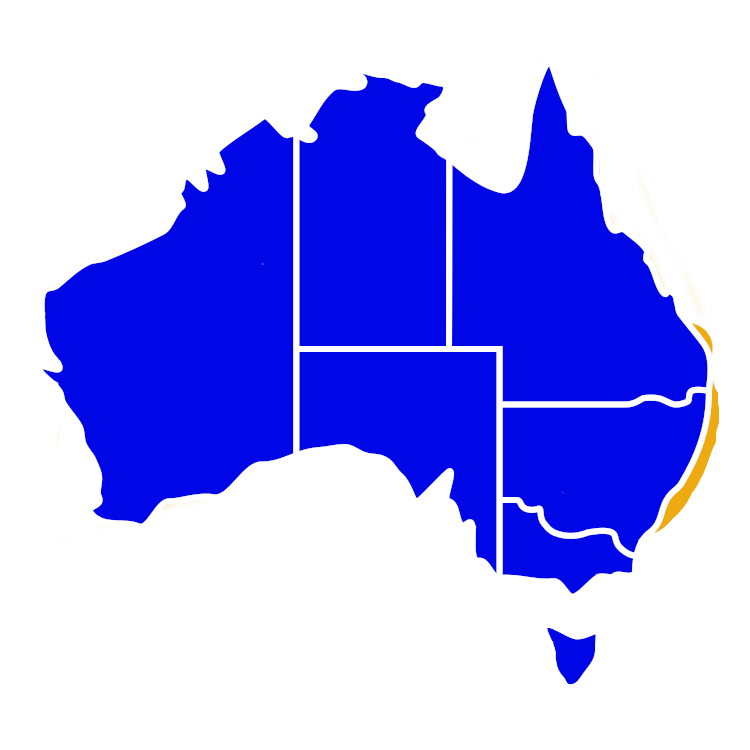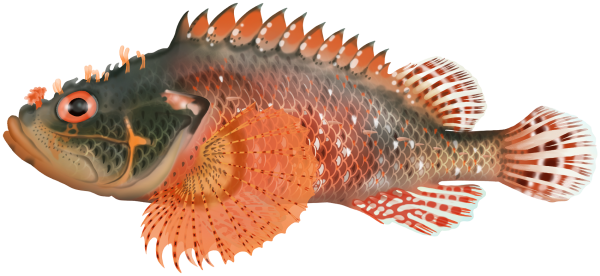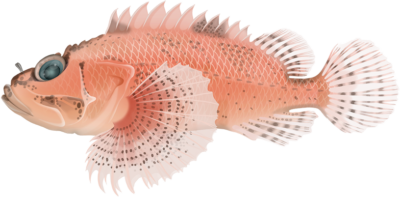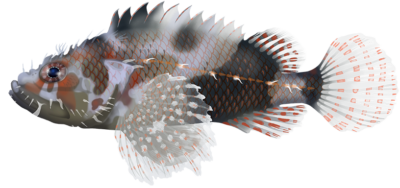Quick Facts
Distribution

Interesting Info
- Pygmy Scorpionfish are mainly found along the eastern coast of Australia, particularly in the Great Barrier Reef region. They can also be found in other areas of the Coral Sea, such as the waters surrounding Lord Howe Island and the reefs off the coast of Queensland and New South Wales.
- These fish have a unique appearance, characterised by a stocky body and spiky, venomous spines that serve as a defensive mechanism against predators. They have intricate coloration patterns, ranging from mottled reddish-brown to yellow or green, which helps them blend with their surroundings.
- Pygmy Scorpionfish are primarily ambush predators, relying on their camouflage to blend in with their surroundings and ambush unsuspecting prey. They typically feed on small crustaceans, such as shrimp and crabs, as well as small fish.
- In addition to their venomous spines, Pygmy Scorpionfish possess a unique hunting strategy. They have a specialised appendage called an illicium, which is an elongated ray located above their mouths. At the tip of the illicium, there is a small, lure-like appendage called an esca that resembles a prey item. By wiggling the esca, the fish attracts potential prey, increasing its chances of capturing a meal.
- Pygmy Scorpionfish are oviparous, meaning they lay eggs. They are known to reproduce year-round, with peak spawning occurring during the warmer months, typically from spring to early summer.
- Female fish lay small, adhesive eggs that attach to the substrate or nearby structures such as coral branches. The male fish guards and tends to the eggs until they hatch, which typically takes several weeks. Once hatched, the juvenile fish disperse into the water column.
- They have an estimated lifespan between 5 – 7 years.
Species Interaction
Aquarium, Snorkeling & Diving
Pygmy Scorpionfish are not considered a common aquarium fish due to their specialised needs and venomous spines. However, some experienced hobbyists may keep them in larger marine aquariums with suitable tank mates. They are more commonly encountered by divers and snorkelers who actively seek out marine life in their natural habitats. However, due to their small size and excellent camouflage abilities, they can be challenging to spot.
Scientific Classification
Kingdom: Animalia
Phylum: Chordata
Class: Actinopterygii
Order: Scorpaeniformes
Family: Scorpaenidae
Genus: Scorpaenodes
Species: Scorpaenodes Scaber
Conservation Status
In terms of their conservation status in Australia, Pygmy Scorpionfish are not currently assessed separately. However, their habitat, including coral reefs and rocky coastal areas, is under threat due to various factors, including climate change, pollution, and destructive fishing practices.
Pygmy Scorpionfish
As Aquarium Fish
Care Level: Moderate to difficult
Temperament: Semi-Aggressive
Diet: Carnivore
Reef Compatible: Yes
Minimum Tank Size: 60 gallons
Recreational Viewing
- Snorkeling & Scuba
Finding: Difficult
Temperament: Semi-Aggressive
Location: Inner Reef, Outer Reef, Caves, Lagoon
Danger: Venomous Spines





